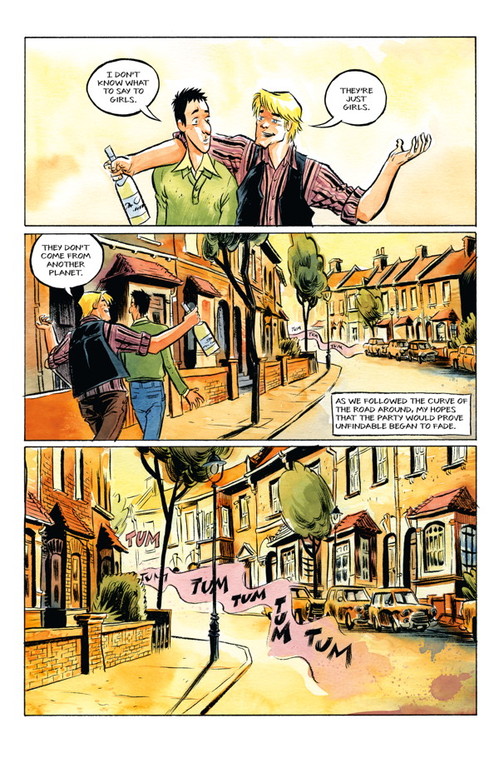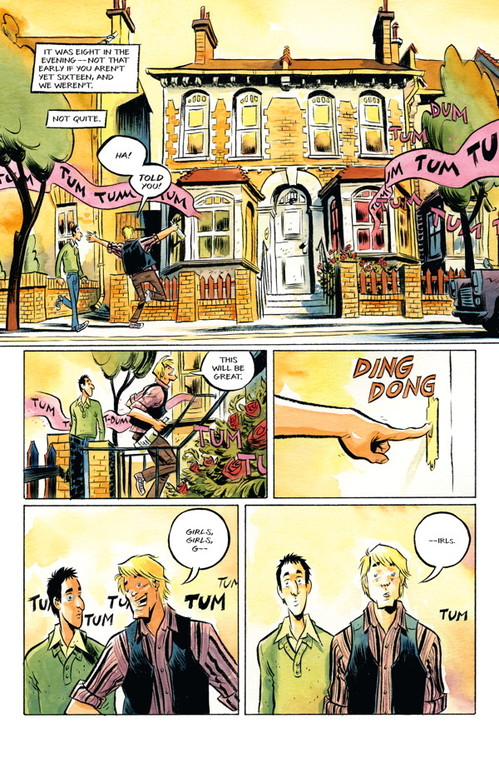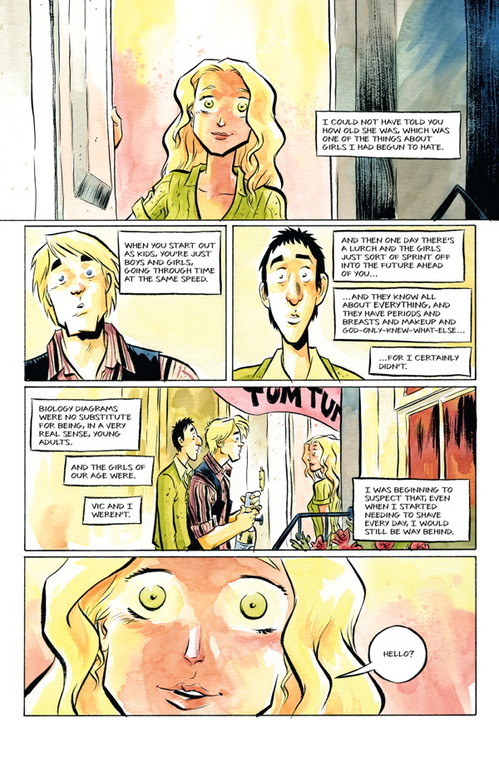Fábio Moon & Gabriel Bá Transcend Adaptation in Neil Gaiman’s How To Talk To Girls At Parties
Main Art by Fábio Moon
Original Writer: Neil Gaiman
Adaptation By: Fábio Moon & Gabriel Bá
Publisher: Dark Horse Comics
Release Date: June 22, 2016
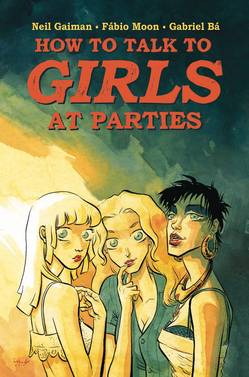 In the perilous universe of possibilities that is young adulthood, parties are the celestial communion to which we all gravitate. As crucial as any compulsory education, they are the spaces where we learn and grow as social creatures. We bond, befriend, negotiate, entertain. Maybe even fall in love. Or maybe you’re more like Enn from Neil Gaiman’s How To Talk To Girls At Parties, the wallflower nursing a Jack & Coke away in the kitchen, “listening to someone’s mom going on about politics or poetry or something.”
In the perilous universe of possibilities that is young adulthood, parties are the celestial communion to which we all gravitate. As crucial as any compulsory education, they are the spaces where we learn and grow as social creatures. We bond, befriend, negotiate, entertain. Maybe even fall in love. Or maybe you’re more like Enn from Neil Gaiman’s How To Talk To Girls At Parties, the wallflower nursing a Jack & Coke away in the kitchen, “listening to someone’s mom going on about politics or poetry or something.”
This graphic novel presents the story of Enn and Vic, two young men at the peak of their adolescence, strolling aimlessly in search of a party to which they’ve been invited. The two could not be more appropriate foils for each other, the cocksure and charismatic Vic leading ahead of the more timid and socially bewildered Enn. Finding themselves lost, the pair opt to politely crash another nearby gathering, this one consisting near-entirely of girls. Vic, by his nature, roams away to the dance floor in the company of Stella, one of the most beautiful girls in attendance, while Enn, our timid protagonist, floats from one corner of the party to the next, in hopes of striking a connection with one of these beguiling young ladies by way of “just talking to them.” With each new woman he speaks with, it becomes increasingly clear that this affair and its inhabitants are not at all as they appear, though many of these glaring signs are lost on Enn in his youthful obliviousness.
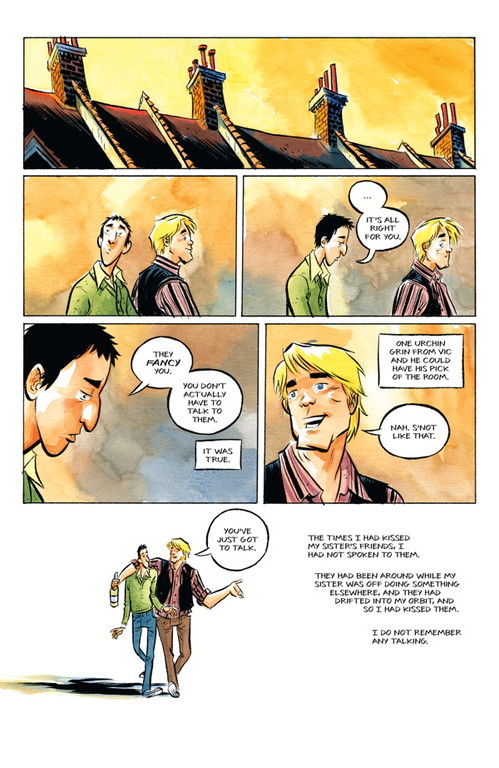
Neil Gaiman’s How To Talk To Girls At Parties Interior Art by Fábio Moon & Gabriel Bá
On the short list of artist/writer duos uniquely suited to transposing writer Neil Gaiman’s brand of ornately worded dialogue and magical-realist sensibilities into graphic novel form, twins Gabriel Bá and Fábio Moon certainly sit near the top. Graphic novel translations, apart from the author’s native comic production, are not unfamiliar territory for Gaiman—this is far from the first comic adaptation of his prose work. But Bá and Moon wrest something special out of the author’s short story, with illustrations channeling the breathless euphoria and halcyon enthusiasm of youth in deep, expressive line strokes and emotive watercolors.
